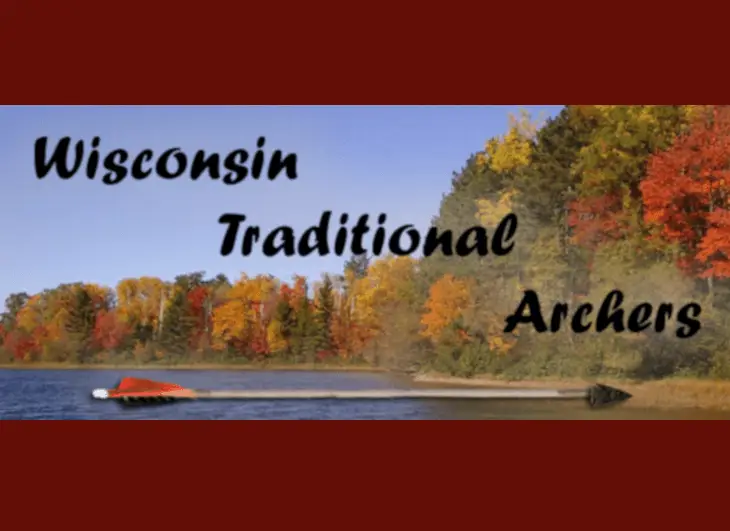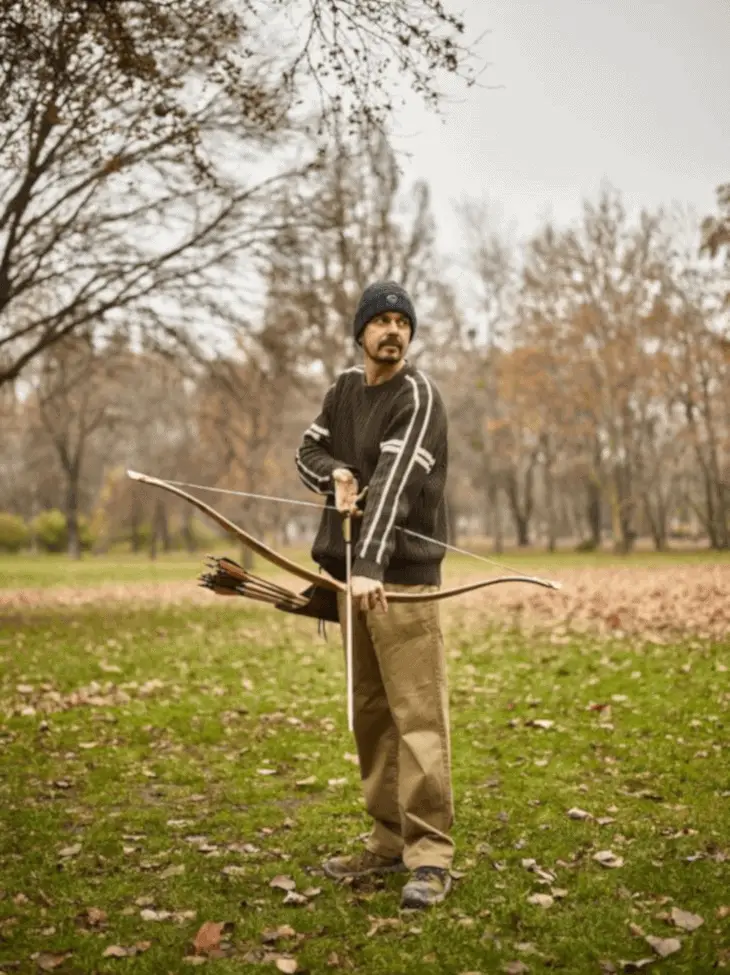Today we’re thrilled to bring you our latest interview, with Grady Powell of Ursack.
If the name “Grady Powell” sounds familiar, that’s because you may have heard it before: after his service as a Green Beret, Grady has used his expertise to appear on a variety of shows, from Nat Geo to the Discovery Channel to Skull Bound TV, where he’s used his skills as a soldier, outdoorsman, and hunter to teach and guide others. He’s been to Africa to Alaska and back—and he’s hung out with John Cena on American Grit, and that’s just about as cool as it gets.
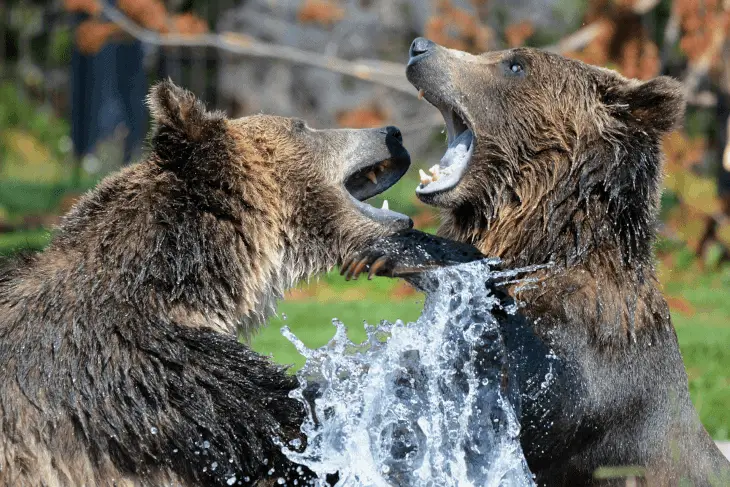
He’s now the Brand Manager for Ursack, a company we’ve liked for a while. Ursack makes a range of lightweight bear resistant food sacks, and their focus on soft-sided sacks can be a godsend for hunters and hikers who are on single- or multiple-day trips in the backcountry.
As we’ve said elsewhere, the more time you spend outdoors, the more likely you are to run into one of our ursine friends, and preparedness is priceless. Below, we’ll go over a number of topics, ranging from bear safety, to bluff charges, to gear selection. We even get Grady to tell a hunting story or two!
So, a huge thank you to Grady for taking the time to talk with us, and a huge thank you to Ursack!
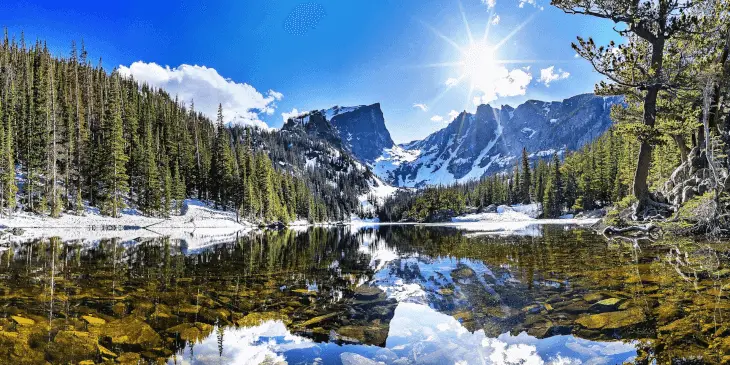
Q: Hello, Grady! Thank you for talking to us today. Ursack is a little different from a lot of the other organizations that we’ve talked to, because you guys have a very clear, very specific mission. Can you tell us what you guys do, the products you make, and a little bit about your history?
A: Sure. And thank you for talking with us—it’s always our pleasure when industry leaders want to learn more about our brand, so thank you for having us. Ursack has been around for quite some time, but we have only just recently taken over ownership of the company. The brand has been primarily focused on the backpacker space up until now, and our primary product is our bear-resistant food sack.
It’s the only soft-sided alternative in bear-resistant food storage, and it weighs less than half the weight of alternative options, yet still holds the same “bearproof” certifications of the hard-sided options. So up until now, that’s been our main focus—the backpacker space.
However, lately we’ve seen a huge number of requests for our products in the outfitter and backcountry hunting space as well. As an avid hunter myself, I know that hunters face the same bear-resistant food storage mandates as everyone else, but typically carry more gear into the backcountry. This is where we’re focusing our efforts right now, and we’ve been developing products aimed solely at the hunting category—for instance, our new and improved quarter bags—but we’re also gathering a lot of feedback from those who know the most: our end users.
We want to know, what size Ursack bags would best suit your needs on backcountry hunts? We are still in the development stage, and would love feedback and suggestions from the community on what you all would like to see in your space. We specialize in fabrics and textile products, so anything goes! [Editor’s Note: if you’d like to contact Ursack, here is their contact page].
Q: Absolutely, and readers, please jump over to the Ursack page with ideas! It’s not often that companies directly seek input from their users, so that should be a fun and fascinating process.
Grady, you yourself have a pretty interesting history, and you spent some time in the Army Special Forces earlier in your career. To the degree you’re comfortable (or allowed!), can you tell us about that experience? How you got involved, where you served, and what you learn from your time in the Army Special Forces?
A: Well… Where do I start? That is potentially a very long answer, but to keep it brief… I knew as a child that I was meant to serve. Never pressured, but always was pulled towards it. I found out late in high school that my father was actually a Green Beret back in the day. I was fortunate enough to be selected to give the qualification course a go very early on in my military career, and somehow made it through the extremely difficult two years or so of training, ultimately becoming a Green Beret at about 21.
I was stationed at Fort Carson, Colorado, in Colorado Springs. And served my team (ODA 0313) as the Senior Detachment Weapons Sergeant. With my team, we went on countless training trips across the states, and deployed to Iraq as well as to Africa for a time.
I learned a lot, but one of my main takeaways is that we, as humans, are far more capable of accomplishing the “impossible” than we think. That our physical body can be pushed a whole lot further than we can comprehend, if only we can conquer our minds. I like to live by the motto “you will never know what you are capable of, until you do something you ‘can’t'”.
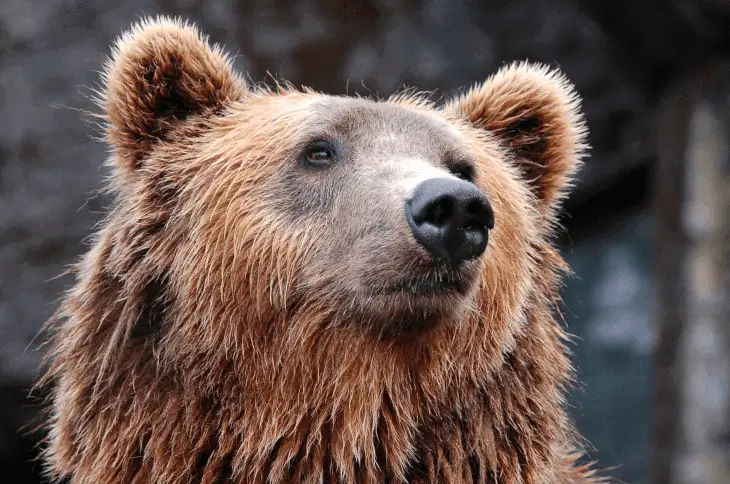
Q: That’s awesome. And I think it’s something that a lot of hunters and backpackers feel at some point—that the moment you think you can’t go on, you always somehow have more. That’s such a paradigm shift, once you truly experience how far we can push ourselves. It can be lifechanging.
In addition to your time in the service, you’ve also worked for some pretty names in the “outdoor space,” including National Geographic and the Discovery Channel. What’s your experience there? What was it like working for those organizations? I’m sure our readers would be very interested in the details.
A: I never thought I would find myself working in television—in fact, I said “no thank you” the first time I was given the opportunity. Then I realized that our lives are only as interesting as we make them, and as someone who wants to write the most exciting life story possible, I figured this was a way to squeeze in some pretty awesome chapters. My job was to travel the world and live an adventure. There were definitely some less than ideal parts of working in front of a camera, but as a whole… I feel very blessed and lucky to have had those opportunities.
Q: OK, so let’s talk gear. Can you tell us specifically about some of Ursack’s best-selling products? What are they, and how to use them safely? We know placement of Ursacks is a big deal—you don’t want them too close to your camp after you bed down. Can you tell us about that?
A: Pretty much anyone who has spent time in bear country is familiar with Bear Cans. And most often the memories are not fond! Although necessary, and quite functional, the cans are heavy, take up a lot of space, and are ultimately more a pain than anything. Ursack is a way to work toward bear conservation, and bear safety while not having the “burden” of excess weight and bulk.
The creator of Ursack, Tom Cohen, developed the bags almost two decades ago, because he, like most of us, was sick of the buckets. Like so many men and women who have started companies, he was trying to figure out a better solution to the problem of these incredibly bulky, difficult-to-use Bear Cans.
So today, we have four main products, the base level being our Ursack Major, which has a 5-day capacity, weighs 7.6oz, and is tear-resistant. We have a larger version of the same style called the Major XL, which has a 7-day capacity, weighs 8.8oz, and is tear-resistant. The XL is our best seller by far, but recently we developed another model that is climbing the ranks pretty quickly: The Ursack Allmitey [Editor’s Note: GREAT name!].
The Ursack Allmitey is the same fabric as the Major models, but we laminated Kevlar—the fabric used in bullet proof vests—to the UHMWPE (ultra-high-molecular-weight polyethylene) to make it both critter- and bear-resistant. The Major and XL are tear-resistant and provide a great deal of protection, but the small sharp teeth of squirrels, raccoons, marmots… over a lot of time, they can get in the fibers and slowly nibble away. With the added Kevlar, the Allmitey is hands-down our most robust product. We also make a critter-only bag, The Minor, but our focus is on the bear products.
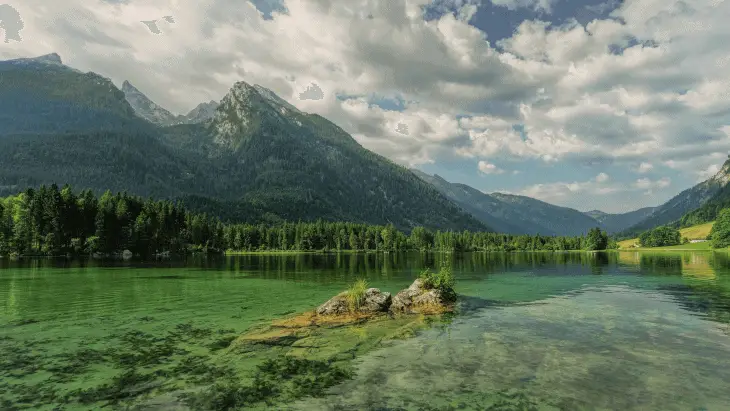
Q: Kevlar—that’s a nice addition! Nice to know that the goods you’ve got locked up are being protected by material that’s literally bullet-proof.
This is probably a pretty good opportunity for us to learn about bear safety. Can you give us some tips about how to trek and hike when you know there may be bears in the area, and what to do if you come into contact with a bear, and some gear you might want to have handy? Granted, many of our bowhunters will be *looking* for bear, but that doesn’t mean they won’t show up when they’re unwanted (or after you’ve run out of tags!).
A: Sure. The first thing you should do is find out what types of bears you’re likely to come across—research what types of bears you may come across before you’re hitting the trail, and then read up on what to do with specific types of bears, as grizzlies and black bears act differently when interacting with humans.
If you do come across a bear, make yourself known. A surprised bear is far more dangerous than one who knows you are coming. They do not want to see you, so if you can alert them to your presence before seeing each other, that’s good.
And—this is so important—never, never get in between a sow and her cubs. She will see you as nothing other than a threat to their lives, and will do whatever it takes to mitigate that perceived threat. Trust me on that one!
Bluff charges are a real thing, and they will often times charge, but stop short. Personally, if a grizzly is barreling my way… I won’t be waiting for them to slow down before I ready my sidearm. But everyone feels differently about that sort of thing.
Lastly, and perhaps most importantly, food—keep your camp clean, and cook and store ALL scented items at least 100 feet downwind of camp. You don’t want a bear that is behind you catching scent and pounding through camp on their way to your goodie bag.
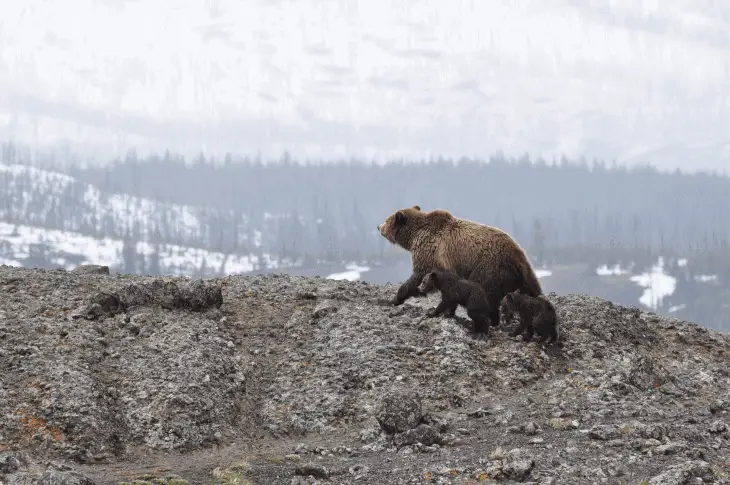
Q: That is fantastic advice—especially about how bears don’t want to see you. I think that’s something a lot of our new hunters / hikers / campers might forget. What about other animals that could be a threat? Can you give us any safety advice or best practices there?
A: Practices for threatening wildlife are similar, but just like different types of bear, they all behave differently than each other. Some animals you never want to turn your back on, some you want to make yourself loud and large. As I said before, the best thing to do is research the wildlife in your space prior to walking into their territory.
Q: Right. As with just about everything in the outdoor space, preparedness is key—know who you might meet, and how they might react. Preparedness is safety.
I’ve actually got a follow-up question about the company itself—you guys have undergone some changes in the last year or two. Would you tell us about that?
A: Sure, and we sure have. For the past 18 years, Ursack has been owned and operated by the original developer, Tom Cohen, out of California. Just this past year, we purchased the company from him, and our mission was to hit the ground running, and make some big changes that people had been asking for: we’ve changed the packaging, all bags are now black, each bag has a reflective tag sewn on the exterior, and the cords themselves have reflective tracers running through them for increased visibility at night. We want to keep everything that was great about the original product, while updating it with some features that make it even more effective.
Q: You, yourself, are a pretty avid hunter. Can you tell us about some of the game you’ve hunted in the U.S.?
A: I have always been a waterfowl, migratory bird, upland bird, small game, and deer hunter, but a few years ago I was fortunate enough to be invited on my first Montana black bear hunt with Jim Kinsey and Jana Waller of Skullbound TV. The first year, we went six days where cubs would roll out of the brush right when my safety was flicked off, or we were getting the slip by every big bear we found.
So the next year when I was invited back, I was absolutely determined to redeem myself. On Day 6, we were coming down to the final hour. I had been glassing this ridge for about four hours, and was getting worried that I would not ever get a bear—but after four hours looking through your binoculars, you start to remember the burnt-out stumps you’ve been looking at.
I swung the binos right, and passed over these three familiar stumps that made a triangle toward the top of the ridge… but now there were four! I steadied my hands and realized it was a big ol’ bruin. Unfortunately, at that point, we had a really bad cross wind, and we were about 1,200 yards out, so I wasn’t about to take the shot. So we packed up and boogied down the draw and back up to a fire road on the other side—scooted up the road and stalked in to within 200 yds. Somehow with the wind at our backs, she didn’t smell us…
I took my first shot, and double lunged/heart shot her. She ran up hill about 15 yards and started to settle, so I took one final ending shot. Redemption! I’ve got her rug in my living room.
Q: That is awesome! Wow—I love hearing that sort of thing. So often you go out—on multiple-day hunts, with friends—and you do everything right, but that fates just don’t go your way. That’s awesome—talk about redemption!
Do you have any advice for our novice bowhunters on how to get started? How to prepare, how to plan a hunting trip, and what kind of gear to bring? Anything that comes to mind would be helpful!
A: I am a NOVICE bow hunter myself, so the best advice I can give is to find someone who has been at it for a long time, and just sit back and listen to them. I am good at a lot of things, but bow hunting is something I am only just starting to peel back the envelope on.
Q: That’s good to hear, and I think our newbie bowhunters are really happy to read it. Bowhunting is REALLY hard, and that’s the case even for veteran rifle-hunters. You have to get so close to your game—it’s hunting, but it’s a dramatically difference experience of hunting.
So, how about for our hunters who have a little more experience? Do you have any words of wisdom for them?
A: I like to think of myself as a perpetual learner, so I’ll pass on that question—I would never be the one to presume to give advice to professionals, or someone who is more experienced than I am.
Q: Last question: do you have a “dream trip” that you’d like to go on? Maybe a trek, or specific trail, or something like that? We’ve been closing out our interviews with this question, and we’ve gotten some fun answers—and some great ideas!
A: Well, I actually won an auction a few years back to go to South Africa for a five-day hunt with three friends… but life got in the way, and I never got to take that trip. I’ve lost sleep over it, and would love to find a way to get that ball rolling again and make it happen.
That… and Kodiak Brown. I was face-to-face with those magnificent beasts for a LONG time, it would be the trip of a lifetime to get back up there and spot-and-stalk one of those monsters.
< end >
Thank you, Grady, for talking with us, and if you’re heading out into the wilderness, be safe! Be bear-ready, know your environment, and come prepared!


